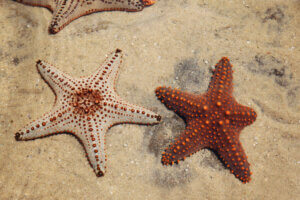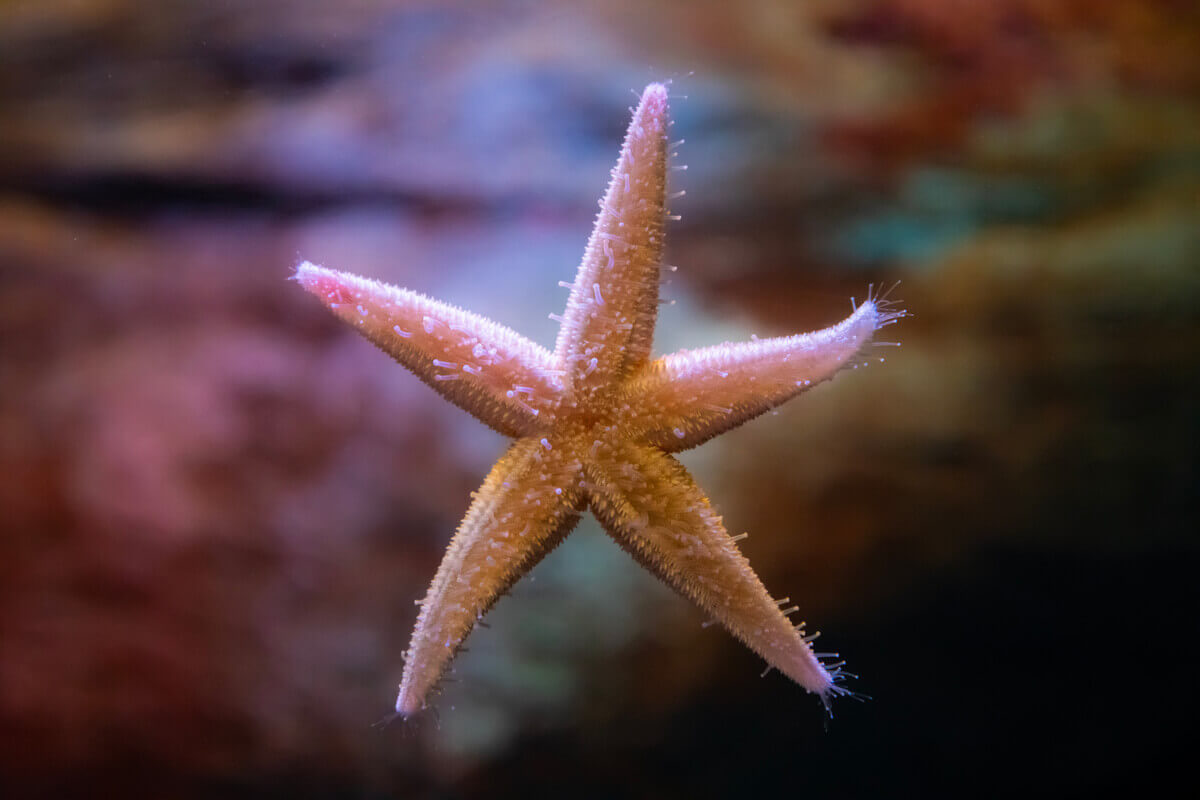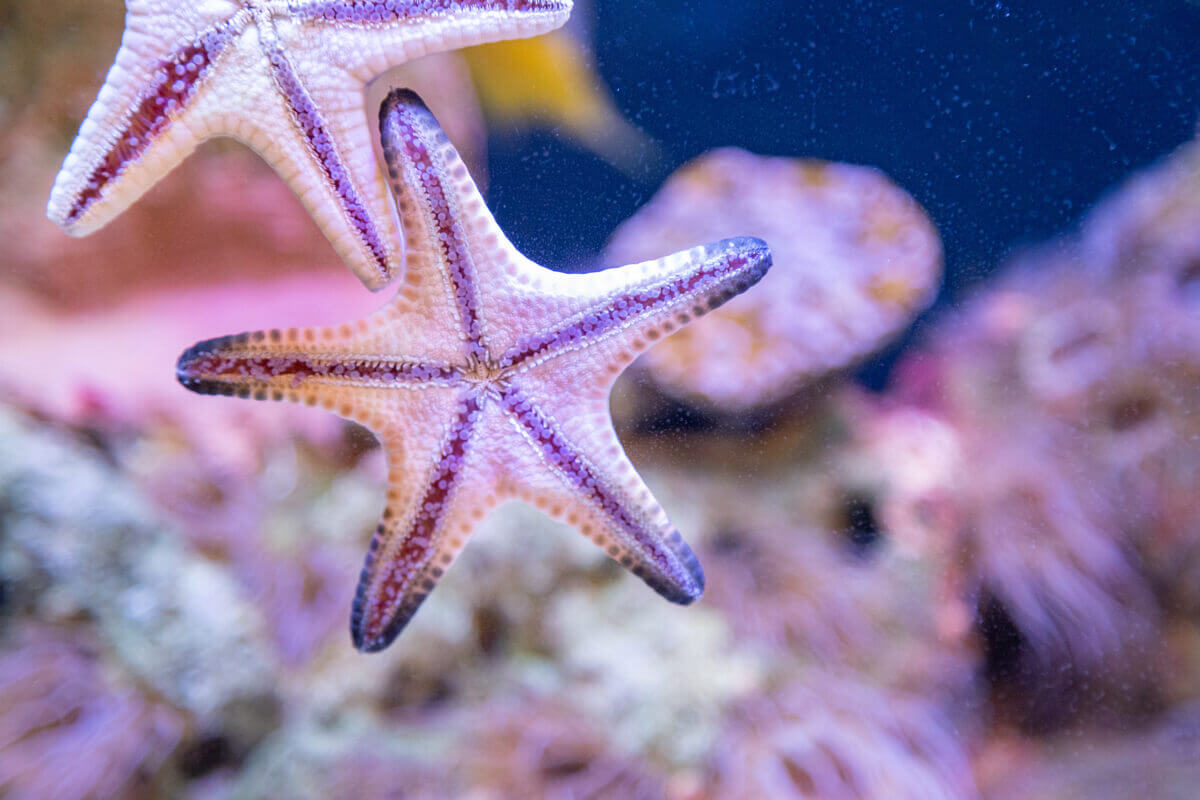Starfish Regeneration: The Secret of Life?

Starfish are famous for their regenerative powers. For example, if they lose one of their limbs, they can replace it with a new one. A new animal can even grow from an arm and a body part. Human beings, compared to starfish, have rather limited powers of regeneration.
In people, the repair of wounds occurs easily in some tissues, such as the liver. However, other cells such as heart muscle and neurons in the human body can’t regenerate after damage. For this reason, starfish can be useful models for studying wound healing and regeneration in humans.
Understanding the biology of starfish
Starfish belong to the Echinodermata phylum and are related to sea urchins, crinoids, and sea cucumbers. They are part of the Asteroidea class and, to this day, there are more than 1600 species of starfish.

Variety of sizes and colors
It’s surprising to know that the size of starfish can vary from less than one inch to over three feet in diameter. However, the most common species measure between about five and ten inches. They have radial symmetry, which means that the arms, whether short or long, extend from a central disk.
Also, it’s interesting to know that, although most sea stars have five arms, some species can have up to forty.
The central disk is an essential structure in the regeneration process of sea stars.
Sea stars have eyes
It’s very interesting to note that these fascinating creatures have eyes. However, these ocular devices aren’t where you would expect them. Also, they’re not at all similar to a human eye since they consist of eyespots at the end of each arm.
Thus, five-armed starfish have five eyes and 40-armed species have 40 eyes. Of course, these creatures don’t see many details, but they do distinguish light and dark, which is enough to manage in their habitat.
They have a protective armor
Depending on the species, the skin of a starfish can feel leathery or slightly prickly. The presence of a tough coating that consists of calcium carbonate plates is typical. In addition, on this cover, these creatures have small thorns that serve to protect them from predators.
No blood
Instead of blood, starfish have a circulatory system that consists mainly of seawater. Seawater is pumped into the animal’s vascular system through its sieve plate.
This liquid circulates to the tubular feet of the star, causing the arm to extend. Contrary to popular belief, the arms are not rigid. In fact, they help to hold prey, such as clams or mussels.
Amputation and regeneration
The process of starfish regeneration is very complex and only partially understood by science. Basically, regeneration is the ability of an animal’s cells to produce new body parts during adulthood, just as they did during embryonic development.
If a starfish has an amputated arm, a repair phase begins to heal the exposed wound. Once the wound heals, the animal begins to generate new cells, which in turn, cause new growth.
It’s important to note that regeneration can take from several months to years. The cell proliferation that results in the growth of the new limb occurs in the final phase. If the final phase is interrupted, the resulting new limb may become deformed.
These creatures can also release an arm to escape from a predator
It’s very interesting to know that, in addition to the fragmentation that starfish perform for the purpose of reproduction, they also do so as an escape response. This means that the animal can divide its body to escape the attack of a predator.
For this reason, in order to lose body parts, the animal quickly softens its connective tissue in response to nerve signals. In addition, this type of tissue is called catch connective tissue and is found in most echinoderms.
In fact, science has identified a factor that promotes autotomy which, when injected into another intact starfish, causes a rapid detachment of arms.

Starfish regeneration: The secret of life?
Echinoderms are found in almost all marine areas and constitute a significant proportion of the biomass. Thus, starfish and other echinoderms are extremely important for the biodiversity of our oceans.
However, the regeneration of these invertebrates remains a secret to science. Will these mechanisms be the key to increased efficiency in human medicine? Only time has the answer.
All cited sources were thoroughly reviewed by our team to ensure their quality, reliability, currency, and validity. The bibliography of this article was considered reliable and of academic or scientific accuracy.
- Vickery, M.C.L. et al. (2001). Utilization of a novel deuterostome model for the study of regeneration genetics: molecular cloning of genes that are differentially expressed during early stages of larval sea star regeneration. Gene 262, 73-80.
- Rahman, M. A., Molla, M. H. R., Megwalu, F. O., Asare, O. E., Tchoundi, A., & Shaikh, M. M. (2018). The Sea Stars (Echinodermata: Asteroidea): Their Biology, Ecology, Evolution and Utilization. SF J Biotechnol Biomed Eng. 1 (2), 1007.
- Ben Khadra, Y., Ferrario, C., Benedetto, C. D., Said, K., Bonasoro, F., Candia Carnevali, M. D., & Sugni, M. (2015). Re‐growth, morphogenesis, and differentiation during starfish arm regeneration. Wound Repair and Regeneration, 23(4), 623-634.
- Hayashi, Yutaka; Motokawa, Tatsuo (1986). “Effects of ionic environment on viscosity of catch connective tissue in holothurian body wall”. Journal of Experimental Biology. 125 (1): 71–84.
- Mladenov, Philip V.; Igdoura, Suleiman; Asotra, Satish; Burke, Robert D. (1989). “Purification and partial characterization of an autotomy-promoting factor from the sea star Pycnopodia helianthoides”. Biological Bulletin. 176 (2): 169–175. doi:10.2307/1541585
- Mulcrone, R. (2005). “Asteroidea” (On-line), Animal Diversity Web. Accessed August 13, 2020 at https://animaldiversity.org/accounts/Asteroidea/
This text is provided for informational purposes only and does not replace consultation with a professional. If in doubt, consult your specialist.